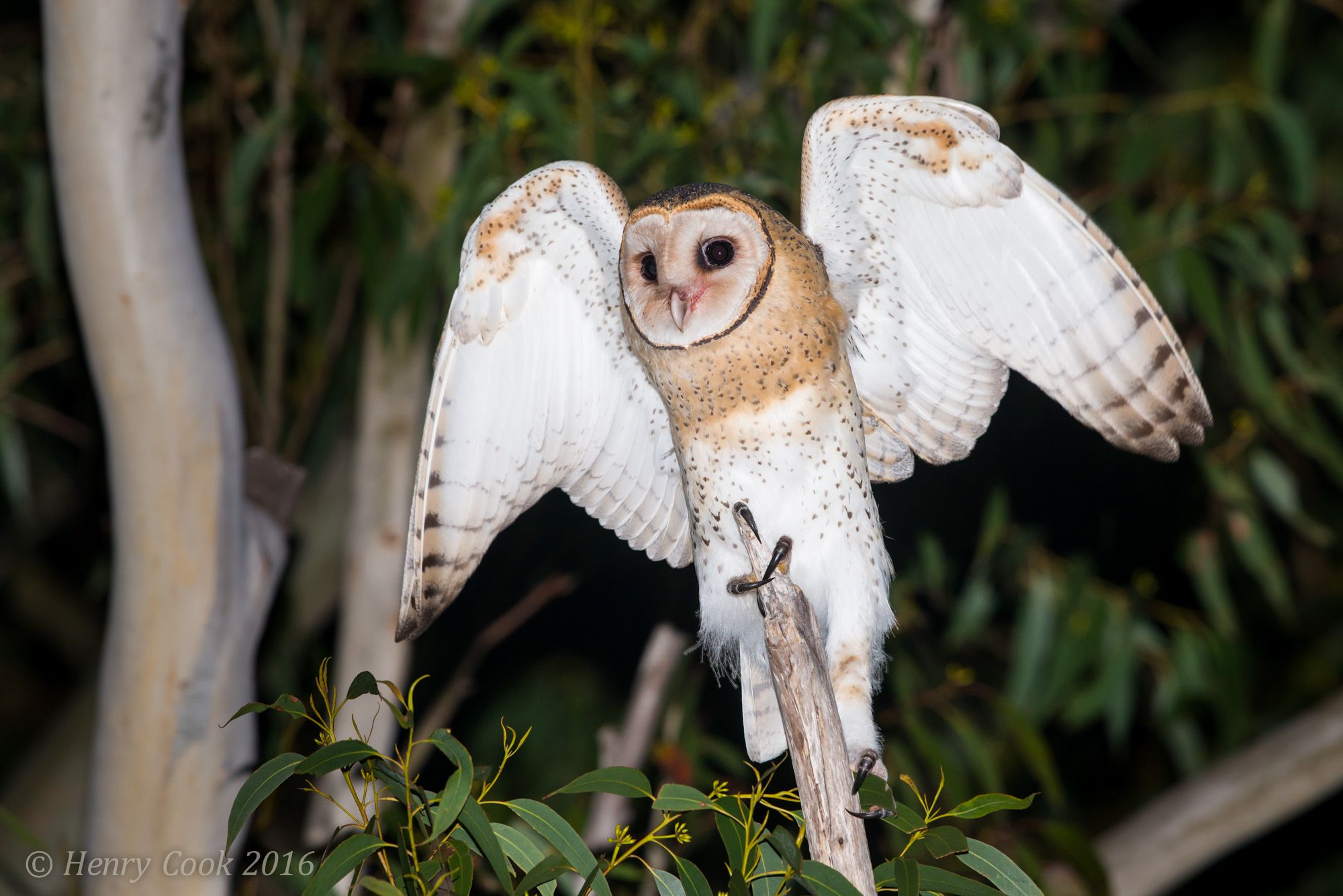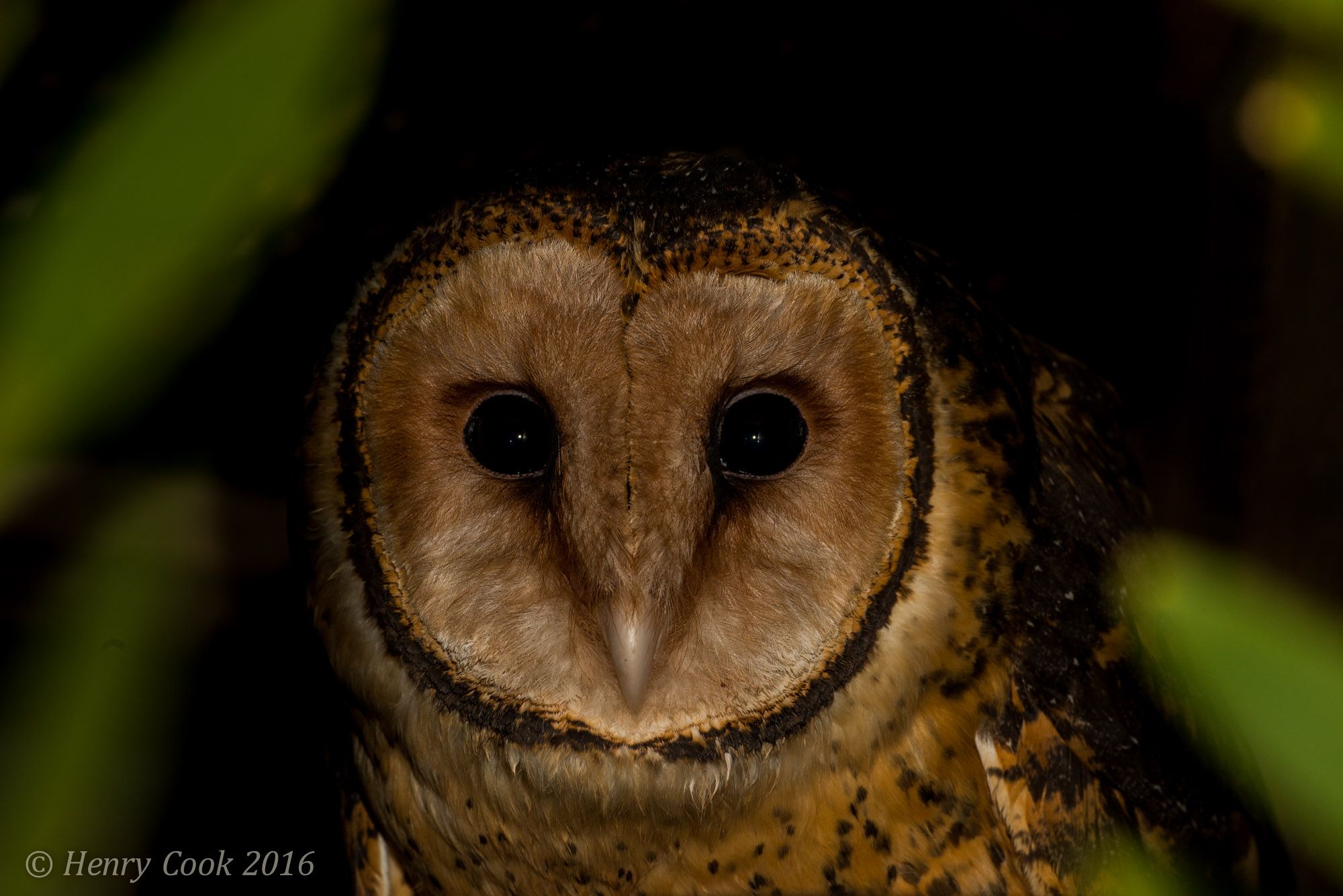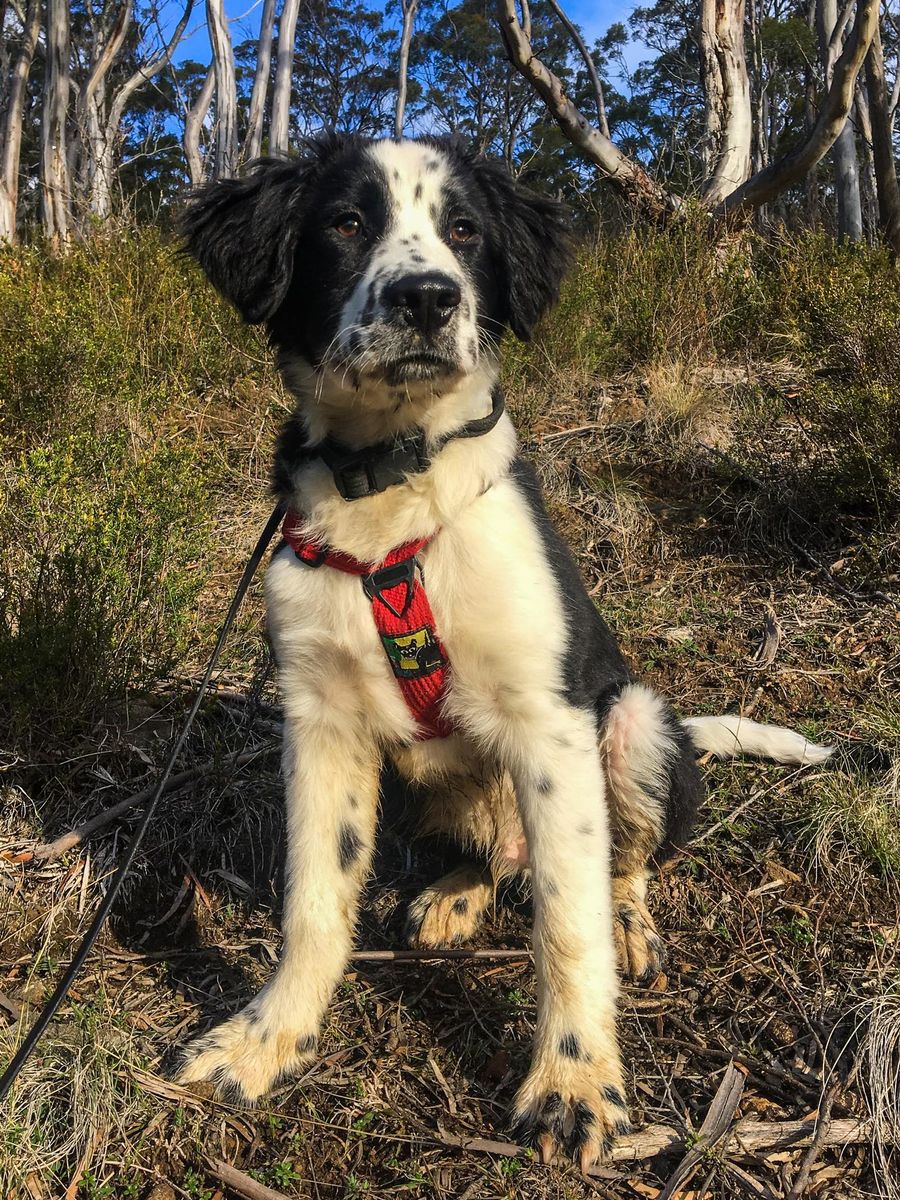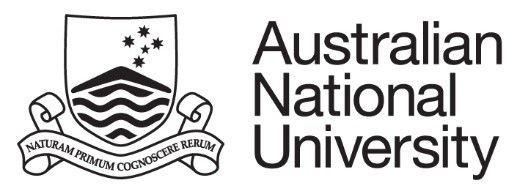Operation Owl-Dog
WE MADE IT!!!!!!
Thanks so much for your support - it was a close call but we got there in the end! Your donations have helped unsure that Zorro and his buddy are going to get the best possible training, and we can get straight to work!
If you want to read more about our other work, or if you've come too late to donate to this crowdfund, but want to support us anyway, you can still donate! Just visit our Difficult Bird Research Group website and click the 'Donate Now' button to make a tax deductible pledge.
Thanks again!
Henry (+ the DBRG team)
***************************************************************************************************************************
Hi everyone,
Henry from the Difficult Bird Research Group here.
In the past few years the internet has help raise a enough money to do a whole lot of cutting edge conservation science!
We've purchased and installed 1000 nest boxes for two endangered Tasmanian birds, staged an emergency intervention for orange-bellied parrots, and built some remarkable contraptions to protect nesting swift parrots from marauding sugar gliders. These project have all been highly successful in producing new science to save endangered birds - we hope you've enjoyed our updates along the way!
We're coming to you again with a new difficult bird - Tasmanian masked owls are as magnificent as they are mysterious. They are a major predator of sugar gliders (which are the main predator of swift parrots!). By eating sugar gliders, masked owls might be providing accidental protection for their parrot neighbors! Like swift parrots, masked owls are dependent on old growth forests to find suitable hollow trees for nesting, but because of severe deforestation in Tasmania, suitable habitat may be increasingly rare.

Masked owls are top predators, but virtually nothing is known about what they need to survive in Tasmania, and how they are affected by deforestation.
Unfortunately though, masked owls are endangered in Tasmania and most details of their lives are unknown to science.
This is because finding owls in the rugged, remote and dense Tasmanian forests by night is a logistical nightmare. Current techniques for finding them are very inefficient. The most widely used approaches for finding owls rely on playing their calls through speakers and hoping that nearby owls call out in response. However, this approach is very unreliable, because the odds of being in the right place at the right time to detect an owl are very low. To make things more difficult, surveys using this approach must be done during the night, in forests that can be difficult to navigate even in broad daylight.

Above: The Tasmanian Masked Owl is an absolutely stunning bird.
Lack of a reliable survey technique for finding owls is a major threat to their conservation. Like swift parrots, masked owls depend on tree hollows for nesting, but there is no information available about the types of trees they prefer. In Tasmania, deforestation, via logging and wood theft, is a major cause of habitat destruction for swift parrots. Old growth forests are critical to masked owls, but owl habitat is being destroyed before we can even properly identify it. This is an emerging conservation crisis in Tasmania, and there has been little progress towards a solution.
Until now.

We want to train Zorro - a border collie cross springer spaniel - to be a new hero for masked owl conservation!
Detection dogs are becoming an increasingly important tool in the kit of scientists trying to find needles in haystacks. Using their amazing superpower of smell, dogs are able to detect things hidden from view much more efficiently and quickly than a human working alone. Detection dogs have been trained to sniff out koala poo, detect rabbits on a windswept island, find weeds in the snowy mountains, and amazingly, they can even locate whale poo on the high seas!
Masked owls are pretty stinky even at their best, so we're planning to train Zorro to detect these smelly birds in wild Tasmanian forests. Owls regurgitate the undigested remains of their prey in a pellet that looks a bit like a cat fur ball. With expert training Zorro will be able to locate owl pellets on the Tasmanian forest floor, helping us to understand where the owls are, as well as what they are eating! By using a detector dog, we will dramatically improve the odds of finding evidence that owls have been in a forest patch, during the day, when it is safe to wander about in the bush!
We're teaming up with the University of the Sunshine Coast’s Conservation Detection Dog Program, who've trained many other dogs for science. We will be using your funds to help with costs getting Zorro up to scratch as a new hero for masked owls (plus a second un-named pup who will be Zorro's sidekick in owl detection, just in case little mate isn't quite up to the task). We need your help to get enough funds together to train the two dogs, and then undertake the first systematic survey of Tasmanian logged forests for masked owls.


Many thanks to everyone who has provided rewards for this project. In no particular order, a huge thanks to...
- Janet and James Luxton who have generously donated an incredible artwork to the cause. Janet has an exhibition that has just opened in the last few days! Check it out here.
- The Wilderness Society for generously supplying some of their fantastic stickers.
Jana Pavasovic The Completist for her beautiful postcard arwork which she's going to HAND DELIVER TO TASMANIA FROM ENGLAND!
- The wonderful Alex and Jane Dudley for generously donating 10 copies of their new book: Faunverse: Wildlife in Poetry- Tasmania. Check out their website.
The Bob Brown Foundation for their beautiful Tarkine stickers, putting us in contact with artists, and for their (soon to be added) photography prizes!
- Wild Island Tasmania for donating some calendars and desk diarys to add to the swag of rewards.
- Nic Gill and CSIRO Publishing for giving us heavily discounted copies of her excellent book Animal Eco-warriors for the rewards stash. Nicole's a legend and we feel incredibly lucky to have her joining the DBRG team as Zorro's handler.
- The Bruny Island Environment Network for donating a number of copies of Bruny Island Birdsong. Thanks a bunch!
- Firstdogonthemoon and all at the FirstDogontheMoon Institute. Walkley Award winning cartoonist and new-Tasmanian has made the rather epic move to Tasmania. It's no small task to shift an entire institute, but somehow they managed. Many thanks for your unswerving support.
- EggPicnic, for yet again coming to our call for excellent crowdfunding rewards. Their work is topshelf and we're thrilled to have them helping us out.
- Inala Nature Tours for yet again stepping in to contribute to one of our crowdfunding ventures.
Wolf Eyes are a Sydney based company that typically services the security and farming industries. Their equipment is top shelf and we're grateful that they could provide such a generous reward. Check out their range here www. wolfeyes.com.au
Thanks to the sourdough starter for giving Henry a hobby that keeps him occupied in the moments he's not refreshing his twitter feed or playing with Freddie!
Thanks to Zorro for being ridiculously cute.
How The Funds Will Be Used
We are aiming for $60,000.
We've worked out that it'll cost about $400 per day (including training, handlers, travel and equipment) for Zorro to survey a patch of forest for owls. This budget gives us 150 days (nearly 4 months) of owl search time across Tasmania, and leaves us with 2 fully trained and field tested dogs + handlers ready to go out searching for owls.
Training expenses for two dogs & handlers: $31,125 (acquisition of a second dog, 2 trips to queensland for 2 handlers + dogs, 5 trips to Tasmania for 2 trainers, in situ field training, testing and evaluation)
Travel around Tasmania for owl survyes: $28,875 (estimated at ~200km traveled per trip, plus dog care costs)
The Challenges
The program has a high likelihood of success based on the experiences of other projects.
Quality training is a critical factor predicting the success of and detector dog program, and that's why we've allocated half of our budget to ensuring both dogs (and their handlers) are trained by the best available experts in the field.
Travel around Tasamania can be challenging, particularly in the remote, rugged bushland where masked owls live. To make sure we are fully prepared for the challenge of getting to these sites, our field budget will enable us to hire 4wd vehicles and the necessary equipment to keep our dogs happy and healthy while they track down masked owls.
No Reward
No Reward
NAME THE MYSTERY DOG
You've donated some coin! You may as well help pick a name for the mystery pup. Please write any name suggestions in the box below. We will go through them and choose an appropriately hilarious name for the other dog. We don't know sex or type, so it'll have to be a name which works for all types of dog.
Bob Brown Foundation Tarkine sticker
It's a sticker for your car to remind everybody that fantastic places should be saved, not exploited! OWLS LIVE IN THE TARKINE!
swift parrot postcard
Our friend Jana at the Completist (http://the-completist.com) has donated this beautiful swift parrot water color and ink artwork as a post card sized print! Put it on your wall, your fridge or post it to a friend! Masked owls eat sugar gliders, which eat swift parrots, so buy this print to save masked owls!
WILDERNESS SOCIETY Sticker Pack!
Get a sticker pack of four great Tasmanian wildlife stickers.
WOLF EYES voucher
Wolf Eyes has been exceedingly generous and donated vouchers to the value of $30 to be used on our website. They make some incredible torches- my favourite is the x-beam which combines a red beam (perfect for wildlife watching) with the white beam (perfect for not tripping over). check em out www.wolfeyes.com.au
Honorary DBRG membership!
Walkley Award Winning cartoonist and national treasure First Dog on the Moon has created membership certificates for the Difficult Bird Research Group. You can hang your certificate on the wall, add it to your resume, or give it as a gift! You'll receive email updates from our team at ANU letting you in on all the latest developments via our difficult bird science newsletter! (don't worry, we won't spam you because we are too busy saving the birds)
Henry's sourdough starter.
Henry has been baking bread recently- sourdough is surprisingly easy if you follow the instructions. You just need a starter. It's a live yeast that requires low level care and will do all the hard work in getting your bread to rise. My starter came from a friend who claims it's 150 YEARS OLD! Pictured are two loaves that i just baked. Pretty amazing! I'll send you a 100ml vial of the starter and a caresheet. POSTAGE TO AUSTRALIA ONLY
Animal Eco-warriors
The magnificent Nic Gill has100 copies of her book - give this book to a lucky kid so they can learn all about the ways that animals help people to help animals. What's more, each book will be signed by Zorro himself! POSTAGE TO AUSTRALIA ONLY
DBRG Tote
Beat the plastic bag ban by taking your very own canvas shopping bag. It'll be either a shoulder bag or a shopping bag, I haven't decided which yet. Thanks a bunch to Tasmanian artist Tom O'hern for whipping this up.
MASKED OWL T-SHIRT
As usual we're doing a t-shirt. This time I've coerced notorious Tasmanian artist Tom O'Hern to do a masked owl design that'll go on a black t-shirt. Regarded as one of Tasmania's greatest artists, he's extremely prolific and versatile so if you've been to Hobart it's highly likely you've seen his work.
Bob Brown Limited Edition Signed Photography Print
As well as fighting to save Australia from itself, Bob Brown is also a keen wildlife photographer. The reward is a signed copy of one of Bob's beautiful eagle photos celebrating Australia's majestic birds of prey!
Bob Brown Limited Edition Signed Photography Print
As well as fighting to save Australia from itself, Bob Brown is also a keen wildlife photographer. The reward is a signed copy of one of Bob's pictures of a fluffy Tasmanian echidna!.
Swift parrot by Janet Luxton
Well-known artist Janet Luxton and Australian Galleries have generously donated one of Janet's stunning oil paintings to the DBRG. This piece measure 110 x 150cm. Janet’s works are striking but at the same time sensitive. They immediately draw you in highlighting the intricate beauty and the unique characters of the animals and birds she portrays. She is currently exhibiting her most recent works at Australian Galleries http://australiangalleries.com.au/exhibitions/janet-luxton-rs/
WILD ISLAND: Australian Wilderness calendars
Wild Island Tasmania has generously donated nine calendars. There are three smaller calendars, three larger calendars and three desk diaries. It'll be first in best dressed. Please Leave your order of preference in the extra information box and I will try and make sure everyone gets what they ask for.
Faunaverse: Tasmanian Wildlife in Poetry
My great friends Alex and Jane Dudley are about to publish their second book and they have generously donated 10 copies! How wonderful! Alex and Jane's books are fantastic, with each species beautifully illurtrated by one of their photographs. You can read all about their books on their website www.faunaverse.com.au
Bruny Island Birdsong
Bruny Island Environment Network and Bruny Island Bird Festival have generously donated five copies of Bruny Island Birdsong. Bob Brown describes it as "... a delightful collage of bird art, photographs, poetry and prose." Only 5 copies available! Be quick!
The Eastern Curlew
The incomparable Harry Saddler has generously donated five copies of his latest book "The Eastern Curlew". What a legend! Harry assures me he'll sign each copy :-) He's also covering shipping! So get on to this absolute bargain now! You can follow him on the tweets at @mondaystory You can read the blurb on the publishers website here: http://affirmpress.com.au/publishing/the-eastern-curlew/
FIRSTDOG PLUSH TOYS!
The Firstdogonthemoon Institute has very kindly donated some plushies! You can have your very own Ian-the-climate-denialist-potato or give someone an ABC-interpretive-dance-bandicoot for Christmas! What a gift! The toy you receive will be one of the pictured plushies below. It'll be a wonderful surprise as who turns up in your mailbox.
Eggpicnic Masked Owl Tote
Eggpicnic has made a custom Masked Owl design, printed on a lovely high-quality tote bag. Perfect for simultaneously eliminating single-use plastic bags from your life AND enabling endangered owl conservation! It'll be very similar to the bag pictured below. They're very hard wearing bags- I've used my OBP bag as my main grocery bag AND field work bag since i got it. Shipping to Australia only.
Jon Kudelka's masked owl Lino cut LIMITED TO 20
To celebrate hitting the target, the inimitable Jon Kudelka has spent the afternoon preparing a gift for late donations to help truly smash our target! Grab one of his stunning owl lino cuts before the campaign closes!
Overnight at Inala!
Inala, Bruny Island's premier wildlife watching destination has generously donated a night at Inala in one of the cottages. Inala is the best place on Earth to see the Forty-spotted Pardalote, an endangered endemic bird. https://www.inalanaturetours.com.au/bruny-island/inala-cottage